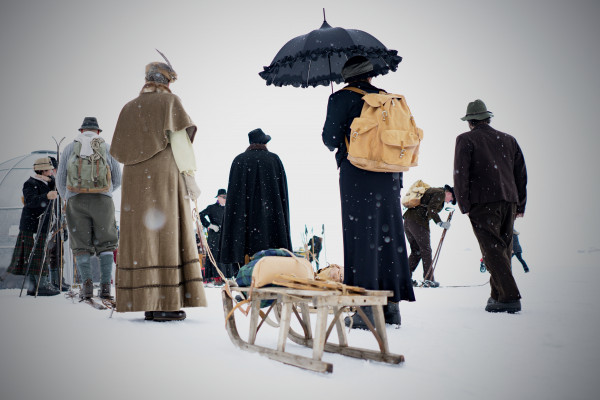Characters vs. People
Stories are about people. Even the ones about robots, or rabbits, or whatever.
If you’re thinking about composing a story, you will probably have some characters in mind that will be performing the action of the story. In stories, action and actors (in the sense of someone who does something) are pretty much the same thing looked at from two differing perspectives, as we have noted in our post Plot vs. Character.
The most obvious difference between characters in stories and people in real life is that story characters tend to be driven. Narratives tend to be more compelling when the characters they describe are highly motivated. Rarely in life are our wants, goals, and perceived needs as clear and powerful as for characters in stories. Our real lives tend to drift rather than head in a specific direction; it is often in retrospect that we ascribe direction when we try to understand our lives by putting them into narratives. Historical personages who seem to demonstrate drive and direction (and have perhaps become historical personages because they had these qualities) make for more interesting biographies than people whose motivations were less strong.
Another aspect that sets characters in fiction apart from people in life is that characters tend to fulfil narrative functions in their story. People, on the other hand, live their lives by acting naturally according to the dictates of their personality. A story is a more or less enclosed unity, while an individual’s life is part of a greater whole. Only in retrospect do we sometimes overlay a narrative onto the biography of an individual – because we tend to feel happier when we perceive structure or direction in the lives of others or indeed our own. We can extract more meaning out of a life that can be told with structure and direction. In fact, there is no way of recounting a person’s biography without making choices concerning structure. If we’re honest, even the choice of which events to relate and how to relate them injects a fair amount of fiction into the story of a life, especially when that life is our own as we tell it to others or ourselves.
Many stories focus primarily on one protagonist. In fiction at least, the protagonist is often wiser at the end of the story than at the beginning. The protagonist is the figure that the reader or audience follows throughout the story. In order to become wiser, the protagonist usually tackles and overcomes some great problem or survives some sort of adventure – which may be an inner one, or a problematic relationship, or a spiritual journey.
To make this protagonist and his or her issues clearer, there is often an antagonist who is in some key ways opposite to the protagonist. Darth Vader is big and dark while Luke Skywalker is small and light. This does not mean that every story needs a baddy – as in Kafka’s castle, antagonism can be a power which is not concentrated in one particular character. Often, however, a strong figure for the protagonist to play against makes it easier for the audience or reader to understand and be emotionally interested in the protagonist.
If your story is a love story, the character your protagonist falls in love with will probably have a very different personality from the protagonist – otherwise there will be little for the two of them to overcome and therefore little basis for a story.
Click to open our free web-tool:
There may well be at least one other main character who throughout the course of the story also goes through a development – we call this role that of the contrastor. This character may function as something more than a mentor figure. The function of this character in the story may be as sounding board, contrasting mirror, or influencing power for the protagonist. Think, for instance, of the role of the mother in Richard Linklater’s Boyhood, or Han Solo as contrasted to Luke Skywalker.
The solution to the protagonist’s problem may, but does not have to be, personified by one or more characters – who may be bit parts or cameos, may have small roles in terms of how much page, stage or screen time they get. Remember the angel waiting tables in Fellini’s La Dolce Vita?
Looked at from the point of view of function or role within a story, characters often fit into an archetype. Real people, on the other hand, rarely do. Historical figures might appear archetypal in the sense that they stand for certain qualities, but that has more to do with the narratives by which we tell their stories than with their actual personalities.
Attributing functions in our own lives to people we know is like the rustle in the bushes – we look for causes to effects we perceive. Unlike the people you meet during the course of your life, every character in a work of fiction has a function in the story, in the sense that they cause things to happen in the plot. Without a function, a character has no legitimacy, no right to exist in the story.
The art of narrative is to make the functions of the characters in the story invisible to the audience or reader, so that the characters feel like people and the story feels like life. Despite actually fulfilling the narrative and acting within the demands of its structure, characters must appear to be acting like people, naturally and according to the demands of their personality. Achieving this effect is one of the hardest tasks for any author.
Photo by Raphael Schaller on Unsplash
Related function in the Beemgee story development tool:
Character Developer

